Zucchini, planting and care in the open ground for which have their own characteristics, are representatives of the Pumpkin family. A versatile vegetable with excellent taste began to be used in cooking only from the 18th century, although it was brought to Europe two centuries earlier, where it was originally cultivated as a rare greenhouse.
Material Content:
Varieties of zucchini for open ground
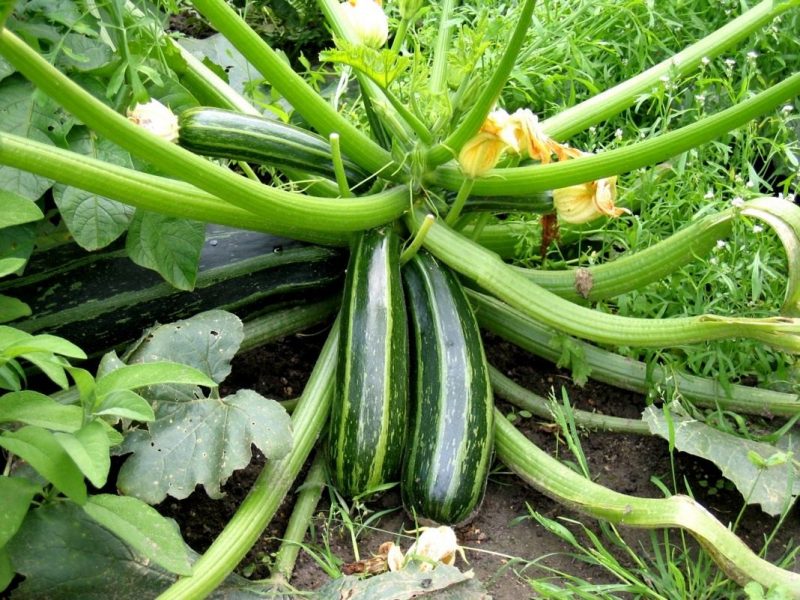
Zucchini is represented by two species - zucchini and white-fruited, which in turn are classified on the basis of different parameters:
- in the form of a bush - bush and semi-bush;
- the shape of the fetus is oblong and round;
- by maturity - early, mid-ripening, late ripening.
Many breeders, both domestic and foreign agro-industrial complex, are working on the development of new varieties and hybrids.
Among the most famous, the following are especially popular:
- Aeronaut - bush zucchini, distinguished by its compact size. A plant with a small number of lashes demonstrates a high yield. The cylindrical fruits of a dark green color with light specks possess creamy, slightly sweet pulp, which is covered with a thin peel. The variety is suitable for conservation.
- White - an early ripening variety, the ripening period of which is 40 days. White oval fruits with juicy pulp are suitable for long-term storage.
- Black handsome - a variety with high yields, due to the name dark green, close to black, the color of the fruit with white flesh. Vegetables are used for food and harvesting for the winter season.
- Yellow fruit - bush zucchini of early ripening, distinguished by a high carotene content in slightly ribbed yellow cylindrical fruits. An excellent vegetable for creating meals from a children's diet.
- Cavili - A very early hybrid, demonstrating high productivity and a long fruiting period, during which direct green fruits develop with a soft white flesh to taste. The hybrid is resistant to powdery mildew.
Basic requirements for growing
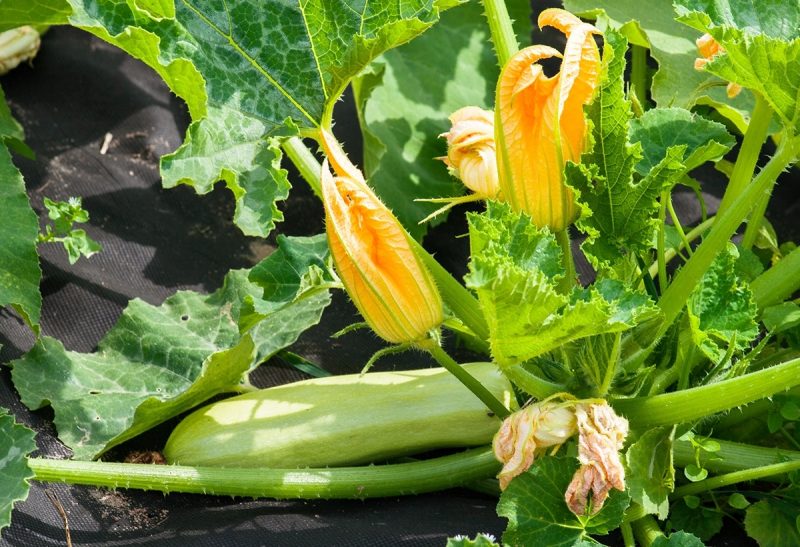
To obtain annual high rates during harvesting, when cultivating zucchini in the open ground, a number of requirements must be taken into account:
- the correct selection of varieties and hybrids, depending on the climatic characteristics of the region and the purpose of the vegetable;
- competent choice of location, taking into account lighting and soil composition;
- crop rotation compliance;
- organization of necessary care, including the timeliness of treatments against pests and diseases.
Growing seedlings at home
Growing zucchini from seeds to seedlings makes it possible to enjoy mature vegetables much earlier than when sowing the seed directly in the beds in the garden.
To grow seedlings, you must follow the instructions:
- A month before the planned date of planting seedlings on garden beds, the seeds are immersed for two days in an aqueous ash solution, prepared at the rate of 1 tablespoon of the product per 1 liter of water.
- At this time, a light substrate is prepared with a slightly alkaline reaction from peat, humus, sod land and sawdust in a ratio of 4: 2: 2: 1.
- The soil mixture is laid out in peat pots with a diameter of up to 10 cm and is watered with a slightly pink solution of manganese.
- Seeds are buried in a substrate of 2 cm and covered with glass.
- After the shoots appear, the glass is removed, and the seedlings move to a cooler room with diffused light.
- After a weekly interval, the temperature regime is restored at the same level and amounts to 20-22 ° C.
- Before planting in the garden, seedlings are watered with filtered water as necessary.
Important! The method of sowing through seedlings is not suitable for those gardeners whose goal is to store vegetables fresh.
Planting zucchini in the open ground
After a month after the sprouts appear and there is no longer any risk of return frosts, seedlings are planted in open ground.
Soil and place requirements
For the cultivation of zucchini, an area located in the sun and protected from the wind with a low level of groundwater is selected. The culture is very demanding on the composition of the soil, giving preference to fertile soil with a slightly acidic reaction and loose structure.

Land for zucchini is prepared as follows:
- In the fall, vegetation residues are removed.
- The soil is dug up to a depth of 25 cm and enriched with nutrients with a rate of 5 kg of compost, 20 g of potassium sulfate, 30 g of superphosphate per 1 m².
- With the advent of spring, the soil on the site loosens, while 15 g of ammonium nitrate per 1 m² is applied.
Then what can I plant?
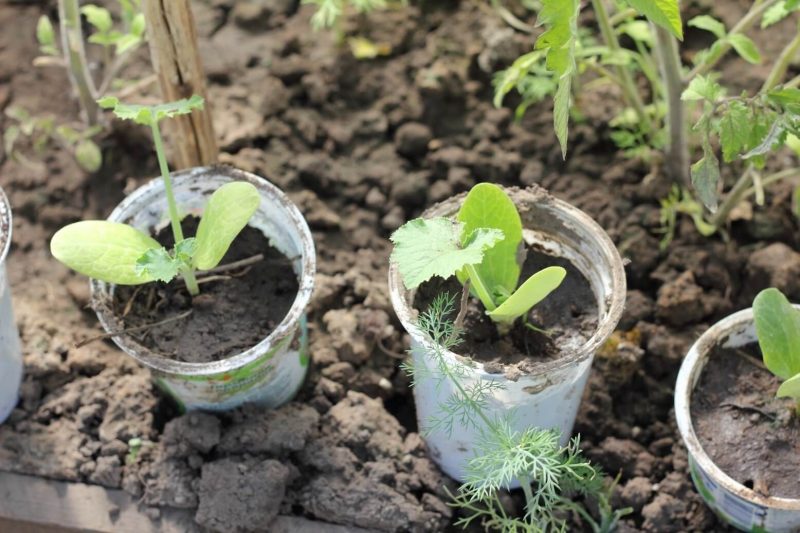
The optimal precursors of vegetables are solanaceous (tomatoes, potatoes), cruciferous (cabbage, radishes), small seeds (dill, carrots) and legumes. If pumpkin (cucumbers, pumpkin, zucchini) were cultivated on the plot last season, then planting should be carried out only after a three-year interval in order to avoid the high probability of plant damage by specialized harmful organisms.
Landing technology
Planting seedlings is carried out in cloudy weather according to the following algorithm:
- Landing pits are excavated in the prepared area according to the 50x70 cm pattern, where 50 cm is the spacing between the specimens and 70 cm is the aisle.
- A small amount of ash with humus is placed in the recesses.
- The seedling is buried in the pit to the cotyledon leaves, after which the earth is poured, compacted and watered.
Outdoor Zucchini Care
In order to grow a high-quality and rich harvest, it is necessary to carry out comprehensive care, including watering, fertilizing, removing weeds and other measures.
Pollination
In the absence of bees during the flowering period, it may be necessary to conduct a pollination procedure:
- A male flower is broken that does not have an ovary on the back.
- The petals are removed from the flower, after which stamens of female flowers are marked with the exposed pestle.
Watering
After sunset, you can start watering the zucchini under the root of the standing, warmed up water in the sun:
- In the summer, before closing of the leaf plates, moistening is carried out daily.
- After hiding the soil with leaves, watering is reduced to 1 time in 4 days.
Advice! With air drought, spraying of the leaves of the culture is carried out.
Fertilizing and fertilizers
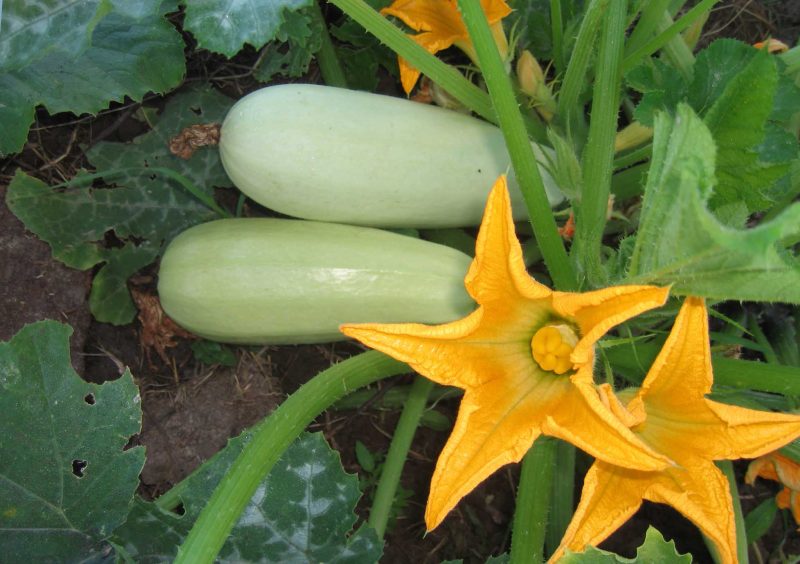
During the growth period of zucchini, a three-fold dressing is carried out, which gives the plant the necessary macro- and microelements for good fruiting:
- During the period of active growth of green mass, the first top dressing is carried out, which includes 400 g of mullein and 20 g of nitroammophos, diluted in a bucket of water, with a rate of 1 liter of solution per bush.
- With the onset of flowering, 40 g of wood ash and 50 g of superphosphate are diluted in 10 l of water with the same application rate.
- During the ripening period, the third top dressing is carried out in the form of a manure solution with the addition of 50 g of double superphosphate and 150 g of wood ash.
Loosening and mulching
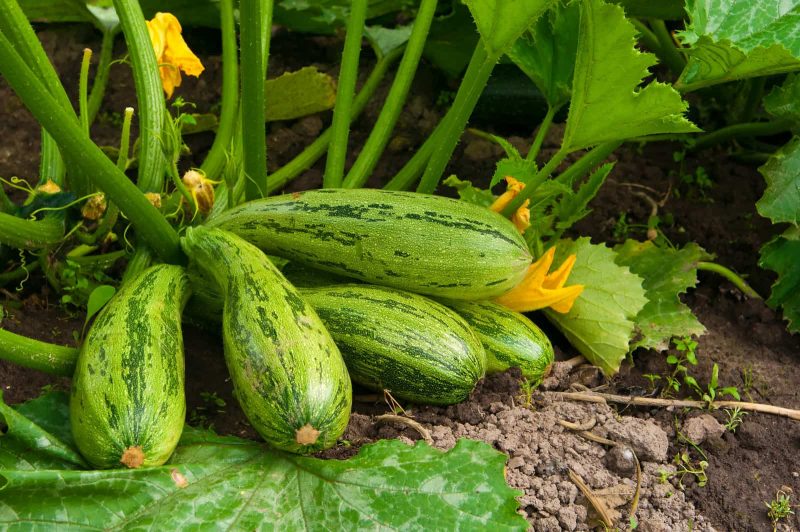
The day after watering, loosening is carried out to provide the deep-lying root system of the vegetable marrow with the necessary aeration and water permeability. To reduce time and effort on continuous loosening, you can mulch trunks circles.
Pinching zucchini
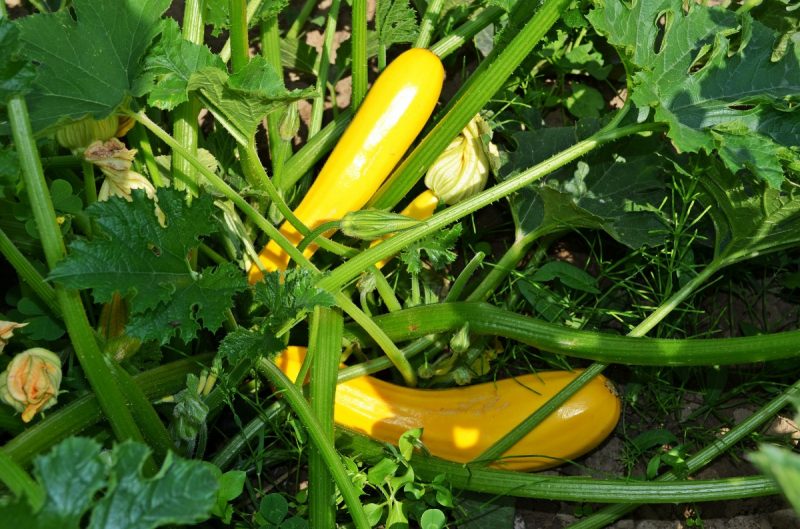
In the climbing representatives of the pumpkin, the central stem is removed at the beginning of the budding phase when it reaches a length of 1.2 m. For nodule forms of squash, pinching is not carried out.
Processing

As preventive measures that prevent the development of diseases and the population of pests, preventive treatment of zucchini with a tank mixture is carried out, which includes copper-containing fungicide and an insecticidal preparation. Plants are sprayed 10 days after planting in open ground.
Diseases, pests and control methods
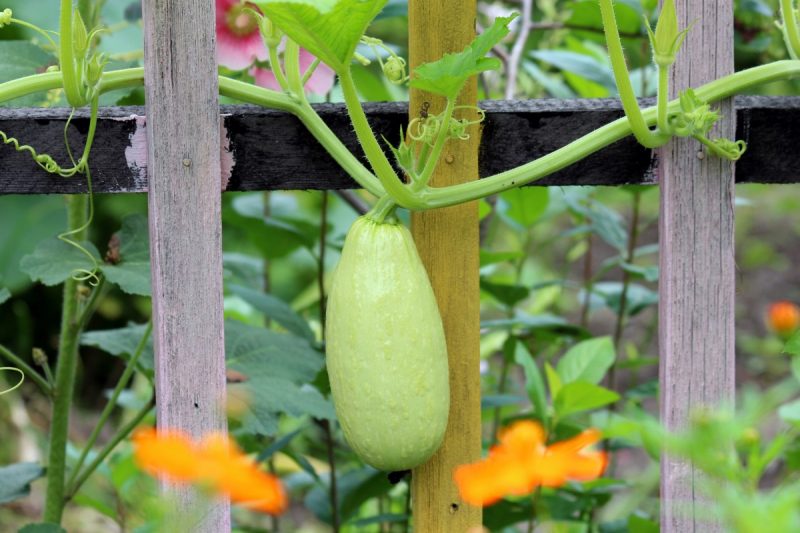
Despite preventive measures, zucchini may show manifestations of such diseases:
- Fungal diseases (powdery mildew, basal, gray and vertex rot, anthracnose) - with the development of diseases, a two-stage spraying of the culture with fungicides should be immediately organized with an interval of 10-14 days. Vertex rot mainly affects young shoots.
- Bacterial diseases (bacteriosis) - with signs of the disease, plants are treated with copper-containing preparations.
The culture is often attacked by pests such as aphids, whiteflies and slugs. To effectively combat the first two types of insects, chemical protective agents in the form of insecticidal preparations are used. However, in the case of gastropod pests, the result demonstrates only a mechanical method.
Collection and storage of zucchini
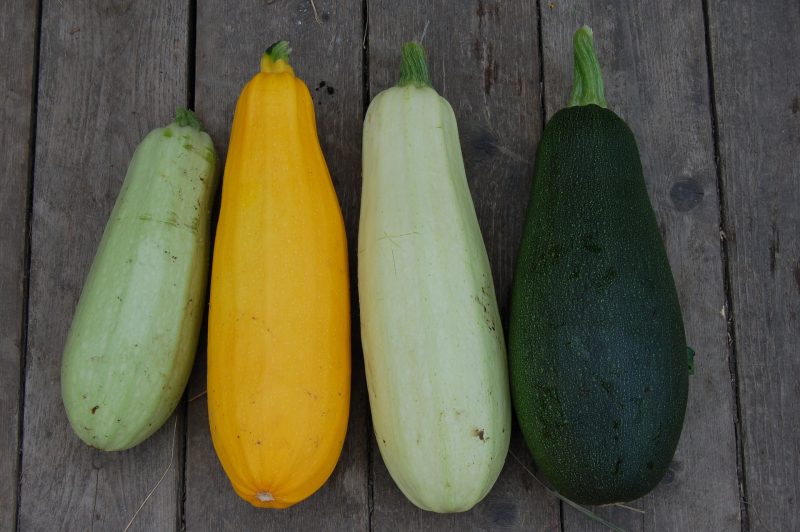
The collection of vegetables is carried out as the fruits ripen and the purpose of their use:
- Unripe fruits with small and soft seeds inside are collected for preparation and preservation.
- For storage purposes, ripened vegetables with a thick skin are subject to collection.
Zucchini, like pumpkin, can be stored for a long period if the following rules are observed:
- The cut is made by secateurs so that a long stalk remains.
- Selected fruits are placed in a dry, cool room where it is possible to provide free air circulation.
So, to grow a low-calorie and nutritious vegetable, which is suitable for cooking and preservation, it is not difficult, if you take into account the characteristics of the culture, and observe the complexity of care.












